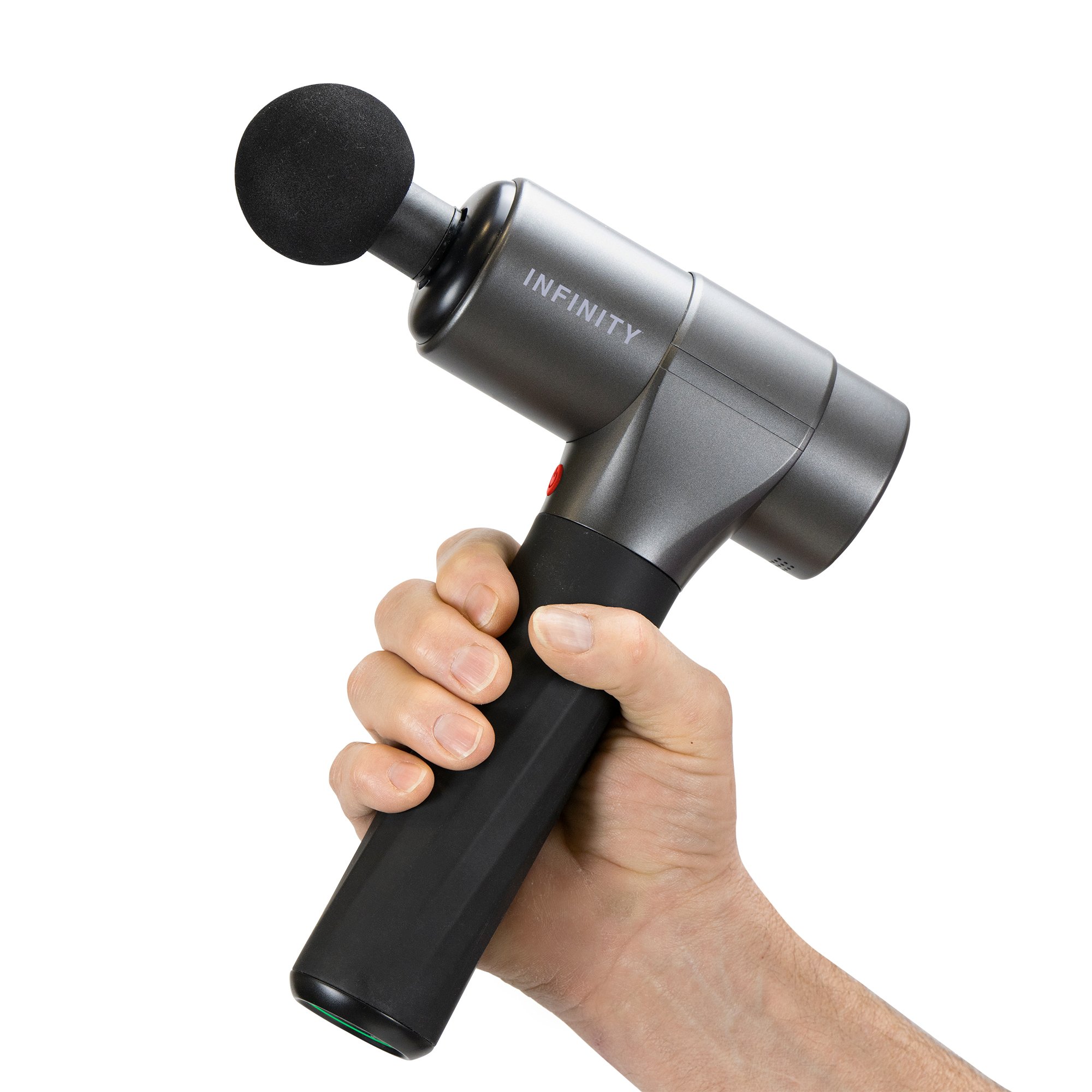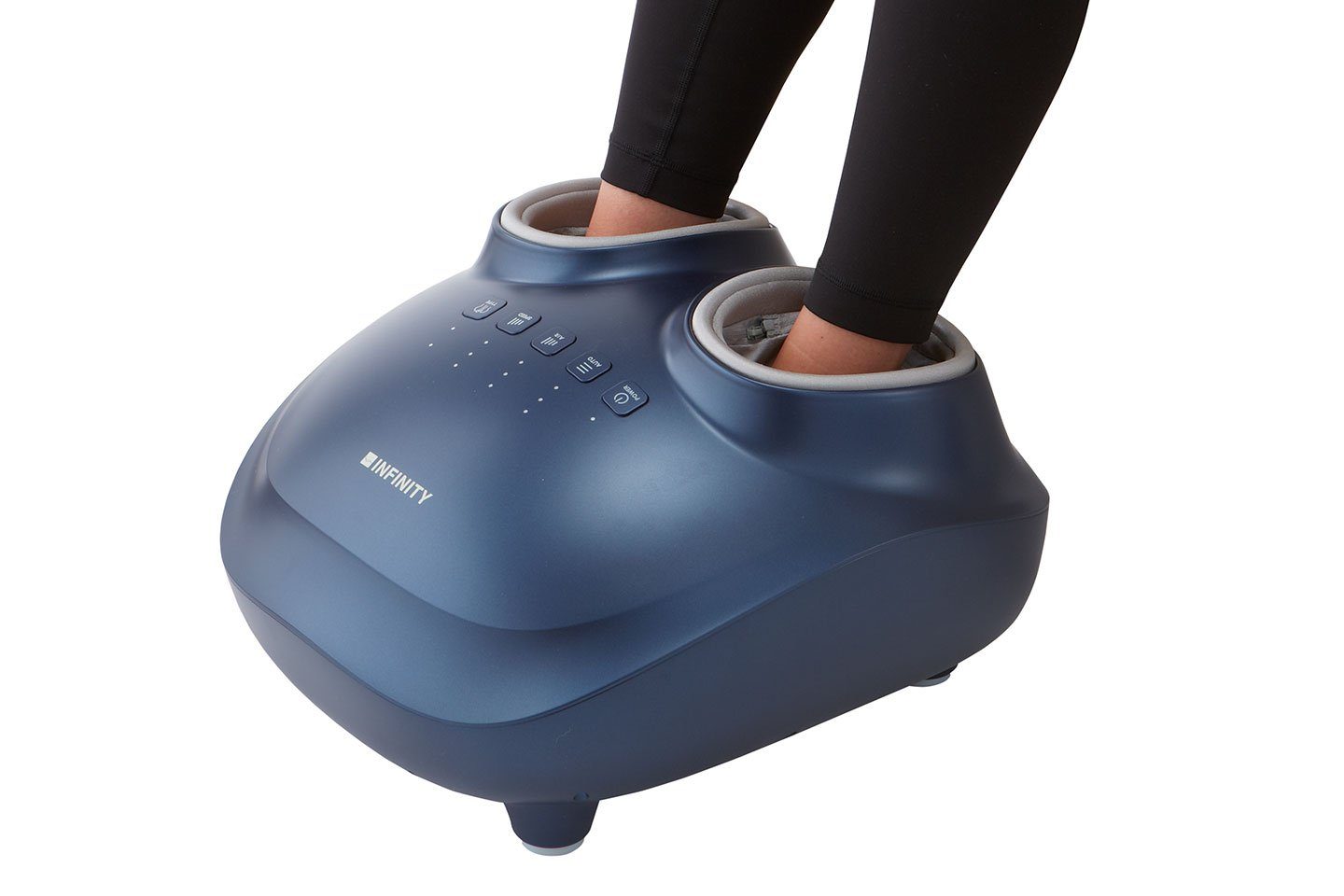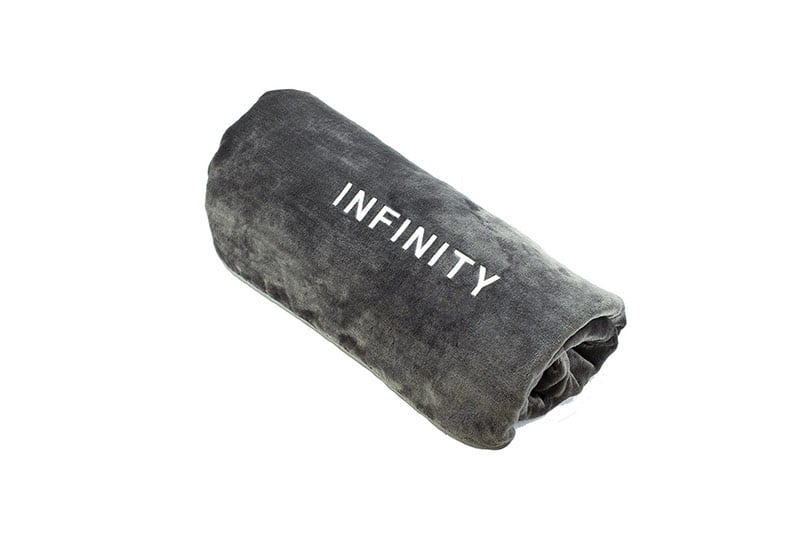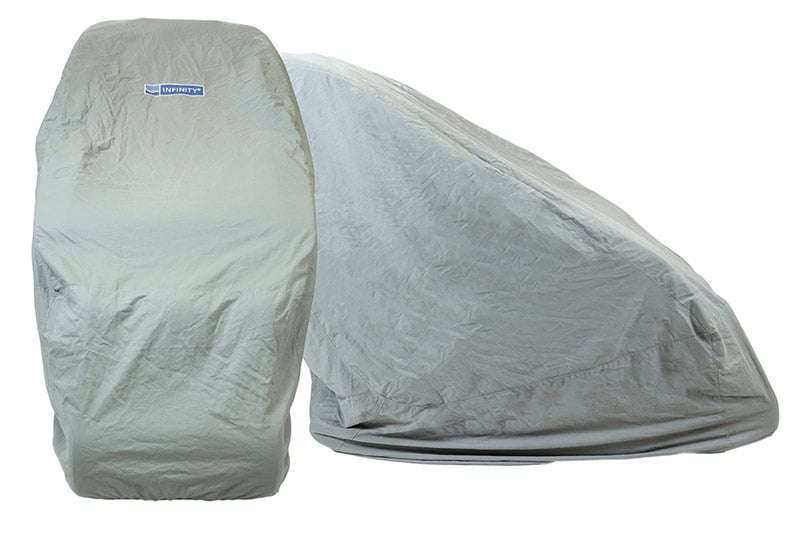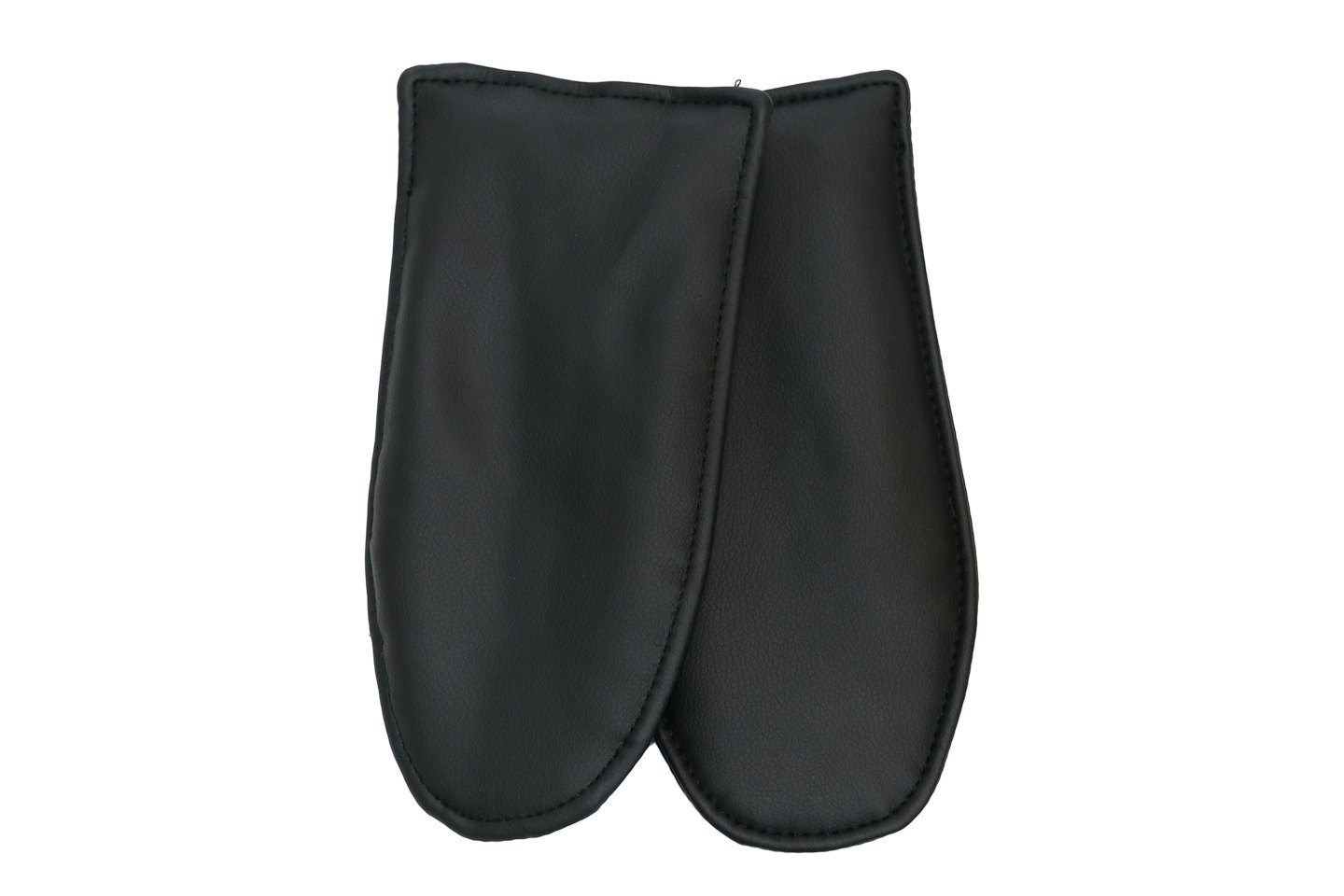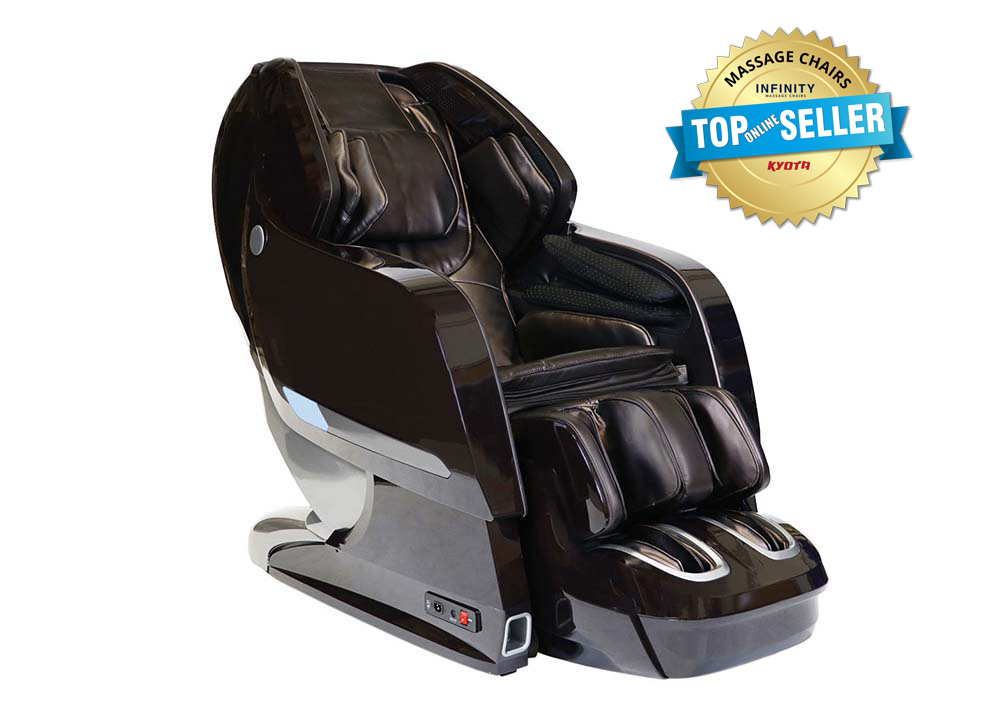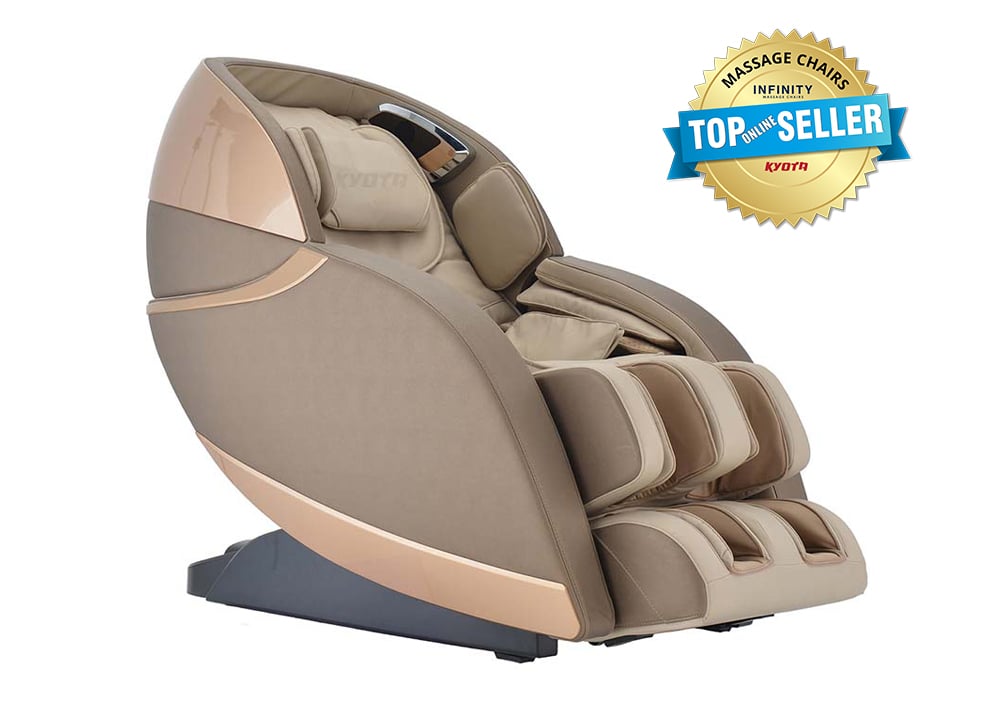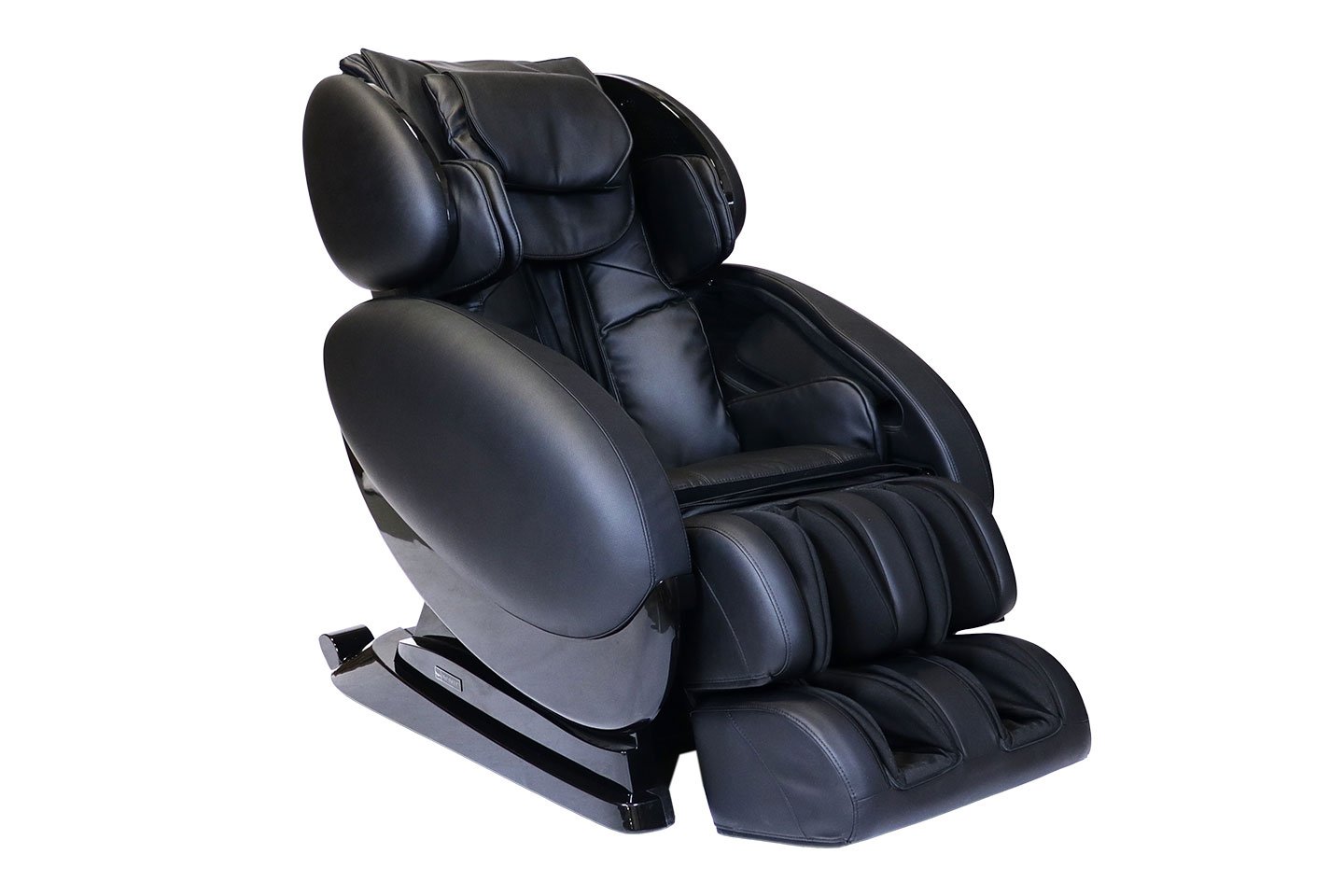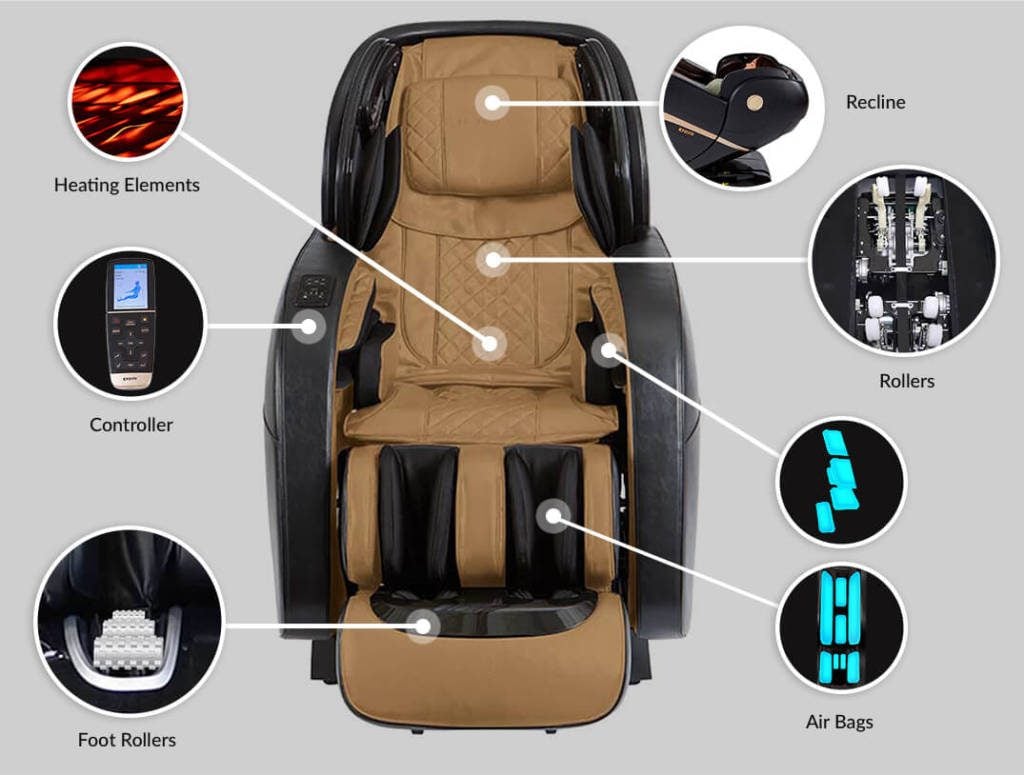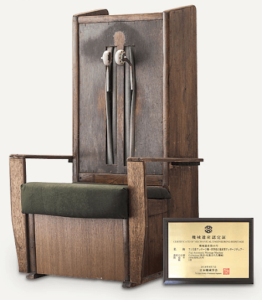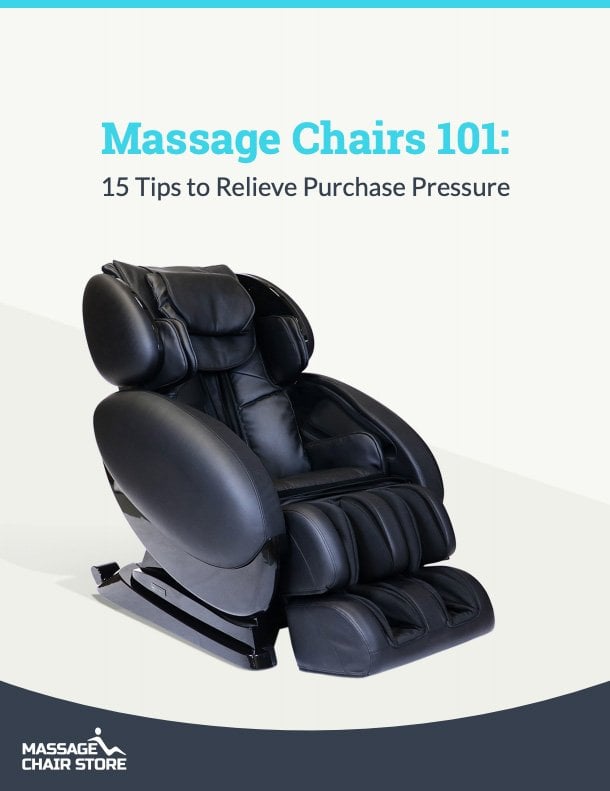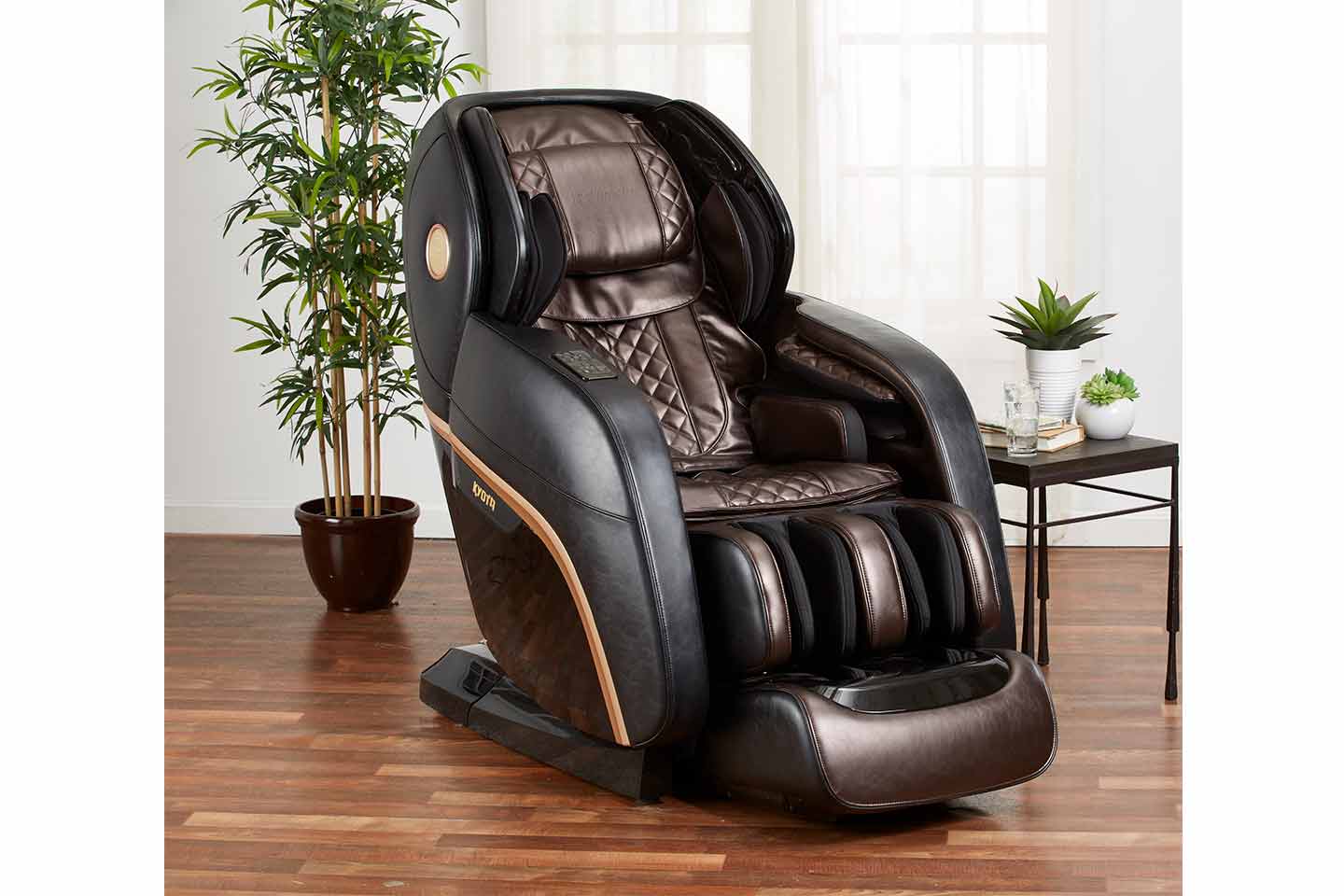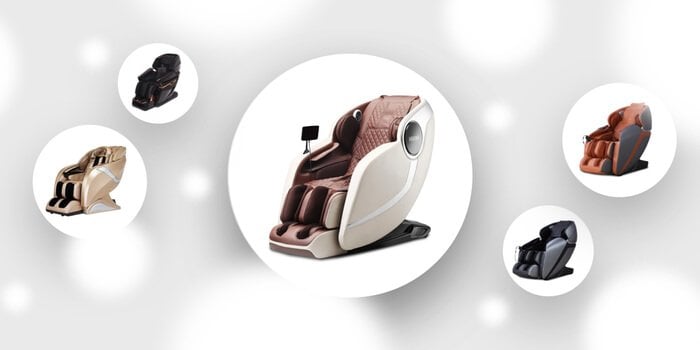How Do Massage Chairs Work? History, Diagrams & More
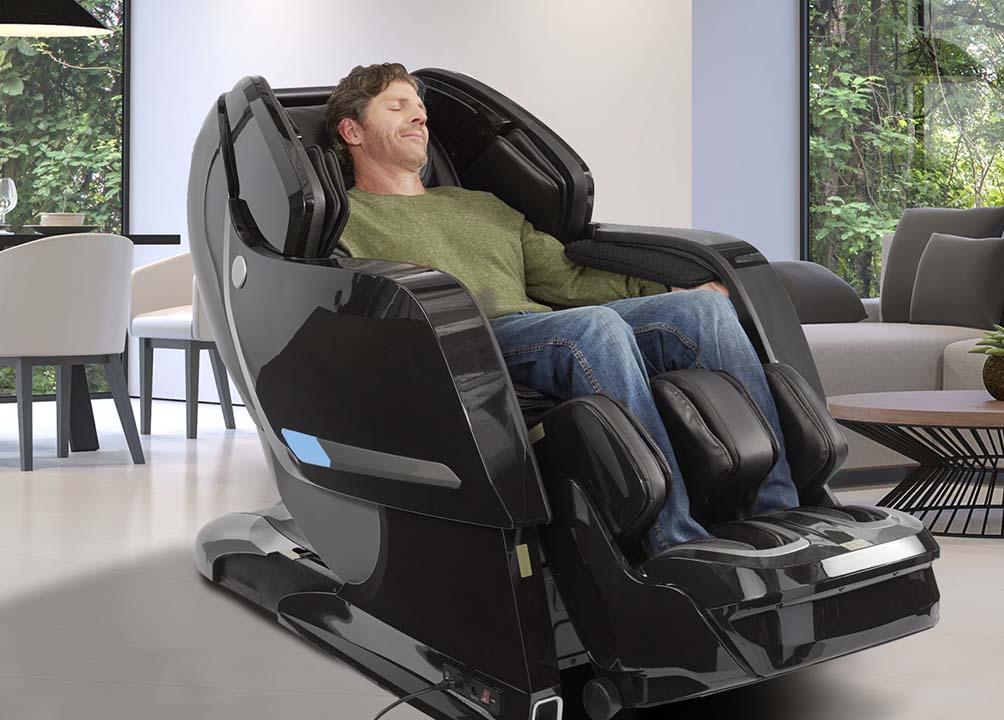
If you’ve ever wished you could summon a masseuse straight to the comfort of your home, wish no more — the massage chair is your answer. But how can massage chairs accomplish the same tasks as a trained (human) professional? Read on to understand how massage chairs work their mechanical magic.
What Is a Massage Chair?
A massage chair is a mechanical recliner that utilizes an internal system of gears and motors to simulate massage therapy. Massage chairs are intended to relieve muscle tension and soothe sore muscles while the user remains in a seated or reclined position. But a massage chair is so much more than a piece of furniture — the best massage chairs on the market deliver a comprehensive spa experience in one stylish, convenient package.
Massage chairs range from basic and inexpensive — in essence, vibrating chairs — to high-end and luxurious, the mechanisms almost replicating the feel of human hands. The best massage chairs on the market incorporate robotic technology that adjusts the internal system to suit each user’s body, intelligently targeting pressure points and muscles in need of tension relief.
Each massage chair manufacturer relies on slightly different mechanical techniques to deliver a truly unique massage experience. However, there are some basic components that feature in most modern massage chairs.
Massage Chair Parts
In order to simulate a full-body massage delivered by human hands, massage chairs rely on a combination of motors, gears, levers, rollers and advanced electronics.
Motors
The simplest massage chair models use motors that produce steady vibrations, similar to the motors found in smartphones. The motors are attached to weighted wheels with unbalanced centers of gravity. Therefore, when a wheel spins, it wobbles, creating a vibration.
Rollers
More advanced massage chairs use rubber rollers to deliver a massage meant to mimic human hands. Wheel-shaped rollers (roughly the size of a tennis ball) are placed along a track in the massage chair’s back, although some models also place rollers inside the leg rest to target the calves and thighs. Most rollers in advanced robotic massage chairs can move left, right, up, down and in circles along the user’s entire back from neck to glutes. Some massage chairs also feature rollers that move in and out, varying in intensity and depth of pressure.
Airbags
Massage chairs can contain anywhere from four to 100 inflatable pouches called airbags, typically placed along the chair’s arm- and leg rests. During a massage, these airbags inflate and deflate, squeezing and releasing the user’s larger muscle groups for gentle compression therapy. Airbags are attached via hoses to a compressor, which can be programmed to “breathe” at varying speeds.
Reclining system
Since modern massage chairs are modeled after recliners, most allow the user to lay almost flat with the touch of a button — some can even recline past that point! Massage chair mechanisms are designed to operate in multiple positions, from upright to inverted past 180 degrees. The motorized reclining system enables the zero gravity function, which takes pressure off the user’s spine and aids in ultimate muscle relaxation.
Remote
Most massage chairs are controlled via remote, either wireless or corded. The remote enables the user to adjust the massage intensity, heat level and recliner position, as well as access any pre-programmed massage techniques. Some massage chairs do away with a physical remote altogether, and are programmed to respond to voice commands.
Microprocessor
Think of the microprocessor as the “brain” of a mechanical massage chair. The microprocessor is a computer hard drive that stores all the information and commands the massage chair needs to know: from massage techniques and patterns to timers and intensity levels. When the user enters a certain command via the remote control, the microprocessor will communicate the message to the appropriate component. Some powerful microprocessors can even make automatic decisions in response to the user’s body by reading their skin temperature, pressure points, height and weight.
Heating elements
Heat therapy is one of the many luxuries of the modern massage chair. Heating elements are often positioned to target the lower back region, though some massage chairs can administer heat to the upper back, arms, legs and feet. Electric pads are the most common source of heat, covering large areas of the body at once; however, their level of penetration isn’t especially deep. For a truly luxurious heated massage, infrared technology can target specific areas of the body with non-invasive light rays.
Hydrotherapy system
Some massage chairs utilize pressurized water to accomplish multiple techniques, from tapping and rolling to compression and heat therapy. Hydromassage chairs can be a significant investment, and repairs must be addressed by the original manufacturer or a highly specialized technician.
How Do Massage Chairs Perform Different Techniques?
So how exactly do all of these components work together to mimic a “real” massage? Innovations in robotic technology mean that there’s hardly any technique a massage chair can’t perform.
Kneading Massage
The kneading sensation results from the rollers making small, rapid, circular motions along the user’s back, neck and shoulders. Swedish massage is one of the most popular techniques found in massage chairs, consisting of long, slow, kneading strokes along the user’s body.
Rolling Massage
Like the kneading technique, a rolling massage is usually accomplished by the rollers moving up and down the user’s body in tandem in a unified wave of gentle pressure.
Shiatsu Massage
Massage chairs can mimic this traditional Japanese massage technique by programming their rollers to sweep back and forth, up and down across the user’s back, applying pressure over a large area to relieve muscle tension.
Tapping Massage
By moving its rollers in and out rapidly against the user’s back, a massage chair can deliver a gentle tapping to tone and soften tight muscles.
Compression Massage
Airbags are responsible for delivering compression therapy. They rhythmically inflate and deflate, squeezing and releasing entire muscle groups at once.
Deep Tissue Massage
This type of massage therapy involves nearly all components of a massage chair. Rollers glide back and forth with varying intensity, followed by dynamic pressure from the airbags.
Reflexology
Massage chairs with reflexology programs feature rollers and airbags in the footrest. These rollers are slightly smaller than those in the backrest, so they can target smaller areas of the foot with kneading motions.
Stretch Massage
Most massage chairs can adjust to accommodate different heights, but this function can also contribute to a stretching program. By reclining with their feet in the footrest, users can alleviate pressure on their spine and experience a full-body stretch.
Zero Gravity Massage
One of the most popular massage chair features, the zero gravity function was first developed in the NASA astronaut training program. By reclining the user until they are completely horizontal, a zero gravity massage chair can take all pressure off the spine to simulate a feeling of weightlessness. This causes muscles to relax further and allows the massage techniques to penetrate even deeper.
The Difference Between 2D, 3D & 4D Massage Chairs
There are dozens of acronyms used to describe massage chair functions, and any certified specialist will be happy to explain what they mean. However, there are three basic terms that all massage chair shoppers should know: 2D, 3D and 4D technology.
These labels refer to the abilities and intensity of the rollers inside the back of a massage chair:
- 2D technology: The rollers move left to right, up and down.
- 3D technology: The rollers move left to right, up and down, in and out along the X, Y and Z (diagonal) axes.
- 4D technology: The rollers have all the functionality of 3D, plus the ability to turn and vary their intensity for a deeper massage.
Inside a Massage Chair
Underneath their sleek exterior, systems of gears, motors and wheels are hard at work.
History of the Massage Chair
The first massage chair design to receive a patent was created by American inventor Roland A. Labbe in 1948. Labbe’s massage chair consisted of a stool mounted on a pedestal, to which a metal frame was attached. The user would sit on the stool and place their arms on two armrests, which would mechanically vibrate to reduce muscle tension in the user’s back and shoulders. Labbe also designed attachments that could target other areas of the body with different massage techniques, such as tapping and rolling.
Labbe’s design certainly wasn’t as subtle as some of today’s sleeker massage chair models, but he had to start somewhere!
Without knowledge of Labbe’s work, Japanese inventor Nobuo Fujimoto devised his own mechanical massage chair in 1954, building his prototype out of salvaged wood and metal. Apparently, Fujimoto’s original massage chair still works when plugged in!
In 1968, American massage therapist David Palmer designed the first “chair in a box.” While not technically an automatic massage chair, Palmer’s model is designed to be portable, with the first version weighing only 28 pounds. The user straddles the chair and rests their forehead and chest on the upright frame while a masseuse works on their back and shoulder muscles. Palmer’s massage chair is popular in airports and malls, where visitors can receive a quick massage without lying down.
Needless to say, massage chair technology has come a long way since these innovators took convenient relaxation into their own hands. But we have Labbe, Fujimoto, Palmer and many others to thank for setting the modern massage chair wave in motion.
Today, mechanical massage chairs come with a wide range of capabilities, some of which the original inventors may never have dreamed possible. Body scanning, voice commands and variable intensity are just some of the functions that make premium massage chairs so comprehensive. At Massage Chair Store, we specialize in high-quality models designed to suit every body type and preference — explore the possibilities here.
When you’re ready to learn more, simply fill out this form or call 866-486-9327, and a certified Massage Chair Specialist will be happy to provide a free consultation.

